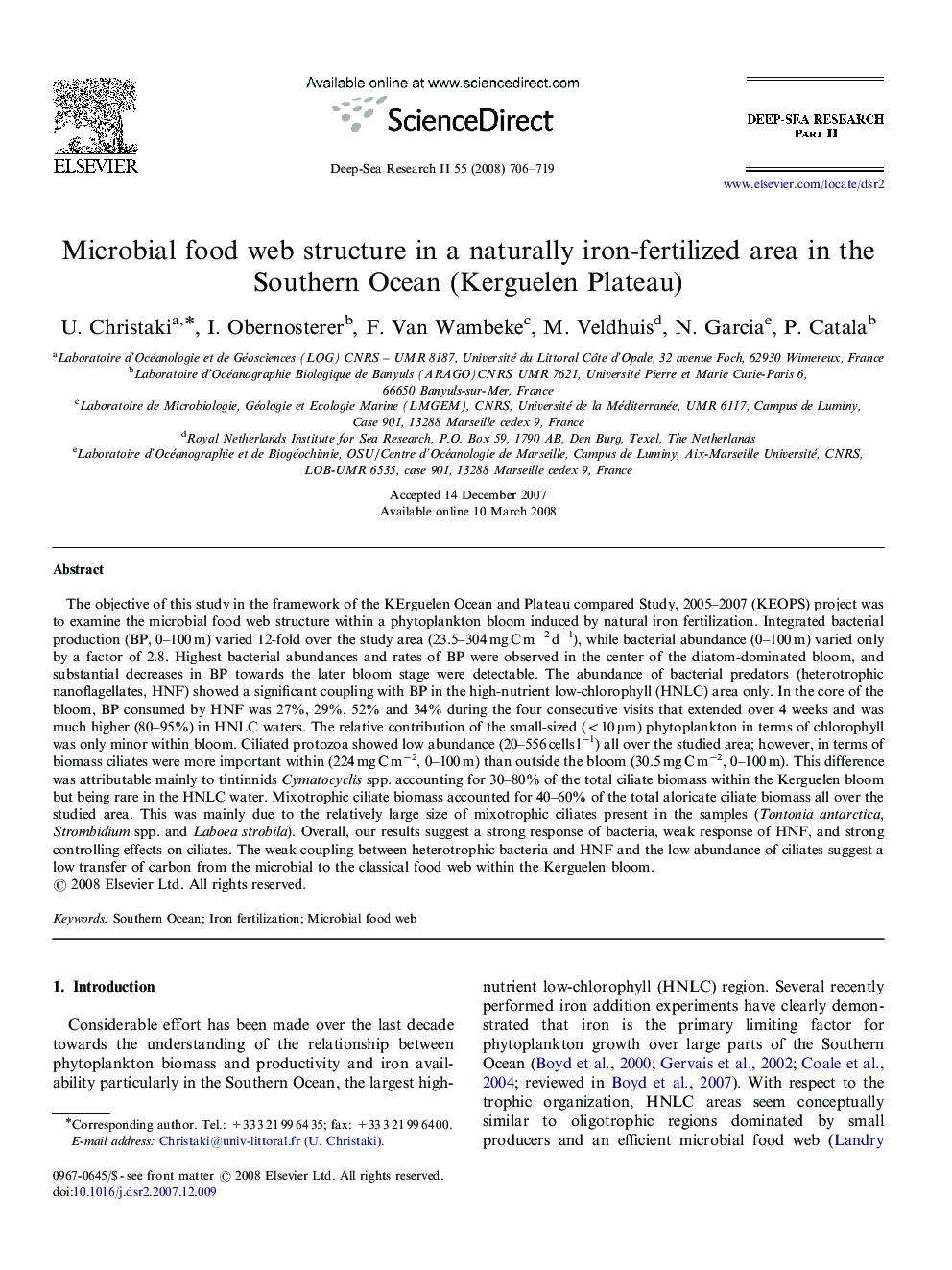| Article ID | Journal | Published Year | Pages | File Type |
|---|---|---|---|---|
| 4537513 | Deep Sea Research Part II: Topical Studies in Oceanography | 2008 | 14 Pages |
The objective of this study in the framework of the KErguelen Ocean and Plateau compared Study, 2005–2007 (KEOPS) project was to examine the microbial food web structure within a phytoplankton bloom induced by natural iron fertilization. Integrated bacterial production (BP, 0–100 m) varied 12-fold over the study area (23.5–304 mg C m−2 d−1), while bacterial abundance (0–100 m) varied only by a factor of 2.8. Highest bacterial abundances and rates of BP were observed in the center of the diatom-dominated bloom, and substantial decreases in BP towards the later bloom stage were detectable. The abundance of bacterial predators (heterotrophic nanoflagellates, HNF) showed a significant coupling with BP in the high-nutrient low-chlorophyll (HNLC) area only. In the core of the bloom, BP consumed by HNF was 27%, 29%, 52% and 34% during the four consecutive visits that extended over 4 weeks and was much higher (80–95%) in HNLC waters. The relative contribution of the small-sized (<10 μm) phytoplankton in terms of chlorophyll was only minor within bloom. Ciliated protozoa showed low abundance (20–556 cells l−1) all over the studied area; however, in terms of biomass ciliates were more important within (224 mg C m−2, 0–100 m) than outside the bloom (30.5 mg C m−2, 0–100 m). This difference was attributable mainly to tintinnids Cymatocyclis spp. accounting for 30–80% of the total ciliate biomass within the Kerguelen bloom but being rare in the HNLC water. Mixotrophic ciliate biomass accounted for 40–60% of the total aloricate ciliate biomass all over the studied area. This was mainly due to the relatively large size of mixotrophic ciliates present in the samples (Tontonia antarctica, Strombidium spp. and Laboea strobila). Overall, our results suggest a strong response of bacteria, weak response of HNF, and strong controlling effects on ciliates. The weak coupling between heterotrophic bacteria and HNF and the low abundance of ciliates suggest a low transfer of carbon from the microbial to the classical food web within the Kerguelen bloom.
